Quote
Early Life
Leonardo was born on 15 April 1452 in the Tuscan hill town of Vinci, in the territory of the Medici ruled Republic of Florence.
He was the out-of-wedlock son of the wealthy Messer Piero Fruosino di Antonio da Vinci, and Caterina, a peasant.
Leonardo had no surname in the modern sense - "da Vinci" simply meaning ""of Vinci"; his full birth name was "Leonardo di ser Piero da Vinci", meaning "Leonardo, (son) of (Mes)ser Piero from Vinci".
Little is known about Leonardo's early life. He spent his first five years in the hamlet of Anchiano in the home of his mother, and from 1457 lived in the household of his father, and uncle in the small town of Vinci.
Leonardo recieved an informal education in Latin, geomatry and mathematics.
In 1466, at the age of 14, Leonardo was apprenticed to the artist Andrea di Cione, known as Verrocchio, workshop was "one of the finest in Florence".
He apprenticed as studio boy to Andrea del Verrocchio, the leading Florientine painter and sculptor of his day (and would do so for 7 years).
Young Leo
Leonardo would have been exposed to both theoretical training and a vast range of technical skills.
By 1472, at the age of 20, Leonardo qualified as a master in the Guild of Saint Luke, the guild of artists and doctors of medicine, but even after his father set him up in his own workshop, his attachment to Verrocchio was such that he continued to collaborate with him. Leonardo's earliest known dated work is a drawing in pen and ink of the Arno valley, drawn on 5 August 1473.
Perfection
In 1482 Leonardo moved to Milan to work in the service of the city's duke- a surprising step when one realizes that the 30-years-old artist had just recived his first substantial commissions from his native city of Florence.
The unfinished panel painting Adoration of the Magi for the monastery of San Donato a Scopeto and an altar painting for the St.Bernard Chapel in the Palazzo della Signori.
Neither commission was completed, the second being interrupted when Leonardo went to Milan. In 1482, Leonardo, who according to Vasari was a talented musician, created a silver lyre in he shape of a horse's head. Lorenzo de' Medici sent Leonardo to Milan, bearing the lyre as a gift, to secure peace with Ludovico Sforza, Duke of Milan.
Milan
Leonardo worked in Milan from 1482 until 1499. He was commissioned to paint the Virgin of the Rocks and
The Last Supper for the monastery of Santa Maria Delle Grazie.
In the spring of 1485. Leonardo travelled to Hungary on behalf of Ludovico to meet Matthias Corvinus, and was commissioned by him to paint a Madonna.
Leonardo was employed on many different projects for Ludovico, including the preparation of floats and pageants for special occassions, designs for a dome for Milan Cathedral and a model for a huge equestrian monument to Francesco Sforza.
Problems he faced
Leonardo began making detailed plans for its casting; however, Michelangelo insulted Leonardo by implying that he was unable to cast it. In November 1494, Ludovico gave the bronze to be used for cannon to defend the city from invasion by Charles VIII.
Leonardo spent 17 years in Milan, until Ludovico's fall from power in 1499.
When Milan was invaded by French in 1499 and the Sforza family fled da Vinci escaped as well, possibly first to Veince and then to Florence
Later
Leonardo did not stay in Milan for long because his father had died in 1504, and in 1507 he was back in Florence trying to sort out problems with his brothers over his father's estate. By 1508, Leonardo was back in Milan, living in his own house in Porta Orientale in the parish of Santa Babila
From September 1513 to 1516, Leonardo spent much of his time living in the Belvedere in the Vatican in Rome where Raphael and Michelangelo were both active at the time
At Final year
In October 1515, King Francis I of France recaptured Milan. Da Vinci left Italy for good in 1516, when Francis I generously offerd him the title of "Premier Painter and Engineer and Architect to the King".
Da Vinci died at cloux (now Clos-Luce) in 1519 at age 67. He was buried nearby in the palace church of Saint-Florentin. The French Revolution nearly obliterated the church, and its remains were completely demolished in the early 1800s, making it impossible to identify Da Vinci's gravesite.
Overall view
Most notably, he believd thet sight was mankind's most important sense and that "saper vedere"("knowing how to see") was crucial to living all aspects of life fully. He saw science and art as complementary rather than distinct disciplines, and thought that ideas formulated in one realm could- and should-inform the other.
Probably because of his abundance of diverse interests, da Vinci failed to complete a significant number of his paintings and projects. He spent a great deal of time immersing himself in Nature, testing scientific laws, dissecting bodies(human and animal) and thinking and writing about his observations.
At some point in the early 1490s, da Vinci began filling notebooks related to four broad themes-painting, architecture, mechanics and human antamony-creating thousand of pages.
The notebooks- often referred to as da Vinci's manuscripts and "codices"-are housed today in museum collections after having been scattered after his death.
The Codex Atlanticus, for instance, includes a plan for a 65-foot mechanical bat, essentially a flying machine based on the physiology of the bat and on the principles of aeronautics and physics
Other notebooks contained da Vinci's anatomical studies of the human skeleton, muscles, brain, and digestive and reproductive systems, which brought new understanding of the human body to a wider audience. However, because they weren't published in the 1500s, da Vinci's notebooks had little influence on scientific advancement in the Renaissance perio
Renaissance humanism recognised no mutually exclusive polarities betweenthe sciences abd the arts, and Leonardo's studies in science and engineering are sometimes considered as impressive and innovatives as his artistic work.
These studies were recorded in 13000 pages of notes and drawings, which fuse art and natural philosophy.
Leonardo's notes and drawings display an enormous range of interests and preoccupations, some as mundane as lists of groceries and people who owed him money and some as intriguing as designs for wings and shoes for walking on water.
The Codex Leicester is the only major scientific work of Leonardo in private hands; it is owned by bill Gates and is displayed once a year in different cities around the world.
his love for anatomy
Leonardo started his study in the anatomy of the human body under the apprenticeship of Andrea del Verrocchio, who demanded that his students develop a deep knowledge of the subject.
As an artists, he quickly became master of topographic anatomy, drawing many studies of muscles, tendons and other visible anatomical features.
As a successful artist, Leonardo was given permission to dissect human corpses at the Hospital of Santa Maria Nuova in Florence and later at hospitals in Milan and Rome.
Leonardo made over 240 detailed drawings and wrote about 13000 words towards a treatise on anatomy.
mona lisa(his famous work)
There, he painted a series of portraits that included "La Giocondo," a 21-by-31-inch work thats's best known today as "Mona Lisa(Mona=my, Lisa=lady)."
Painted between approximately 1503 and 1506, the woman depicted-especially because of her mysterious slight smile-has been the subject of speculation for centuries.
In the past she was often thought to be Mona Lisa Gherardini, a courtesan, wife of Florentine merchant Francisco del Giocondo. Today, the portrait-the only da Vinci portrait from this period that survives-is housed at the Louvre Museum in Paris, France, where it attracts million of visitors every year.
The Mona Lisa is also one of the most valuable paintings in the world. it holds the Guineness World Record for the highest known insurance valuation in history at $100 million in 1962, which is worth nearly $820 million in 2018.
http://www.khabrikutta.tk/2019/03/leonardo-da-vinci.html
0 notes
Link

Early Life
Leonardo was born on 15 April 1452 in the Tuscan hill town of Vinci, in the territory of the Medici ruled Republic of Florence.
He was the out-of-wedlock son of the wealthy Messer Piero Fruosino di Antonio da Vinci, and Caterina, a peasant.
Leonardo had no surname in the modern sense - "da Vinci" simply meaning ""of Vinci"; his full birth name was "Leonardo di ser Piero da Vinci", meaning "Leonardo, (son) of (Mes)ser Piero from Vinci".
Little is known about Leonardo's early life. He spent his first five years in the hamlet of Anchiano in the home of his mother, and from 1457 lived in the household of his father, and uncle in the small town of Vinci.
Leonardo recieved an informal education in Latin, geomatry and mathematics.
In 1466, at the age of 14, Leonardo was apprenticed to the artist Andrea di Cione, known as Verrocchio, workshop was "one of the finest in Florence".
He apprenticed as studio boy to Andrea del Verrocchio, the leading Florientine painter and sculptor of his day (and would do so for 7 years).
Young Leo
Leonardo would have been exposed to both theoretical training and a vast range of technical skills.
By 1472, at the age of 20, Leonardo qualified as a master in the Guild of Saint Luke, the guild of artists and doctors of medicine, but even after his father set him up in his own workshop, his attachment to Verrocchio was such that he continued to collaborate with him. Leonardo's earliest known dated work is a drawing in pen and ink of the Arno valley, drawn on 5 August 1473.
Perfection
In 1482 Leonardo moved to Milan to work in the service of the city's duke- a surprising step when one realizes that the 30-years-old artist had just recived his first substantial commissions from his native city of Florence.
The unfinished panel painting Adoration of the Magi for the monastery of San Donato a Scopeto and an altar painting for the St.Bernard Chapel in the Palazzo della Signori.
Neither commission was completed, the second being interrupted when Leonardo went to Milan. In 1482, Leonardo, who according to Vasari was a talented musician, created a silver lyre in he shape of a horse's head. Lorenzo de' Medici sent Leonardo to Milan, bearing the lyre as a gift, to secure peace with Ludovico Sforza, Duke of Milan.
Milan
Leonardo worked in Milan from 1482 until 1499. He was commissioned to paint the Virgin of the Rocks and
The Last Supper for the monastery of Santa Maria Delle Grazie.
In the spring of 1485. Leonardo travelled to Hungary on behalf of Ludovico to meet Matthias Corvinus, and was commissioned by him to paint a Madonna.
Leonardo was employed on many different projects for Ludovico, including the preparation of floats and pageants for special occassions, designs for a dome for Milan Cathedral and a model for a huge equestrian monument to Francesco Sforza.
Problems he faced
Leonardo began making detailed plans for its casting; however, Michelangelo insulted Leonardo by implying that he was unable to cast it. In November 1494, Ludovico gave the bronze to be used for cannon to defend the city from invasion by Charles VIII.
Leonardo spent 17 years in Milan, until Ludovico's fall from power in 1499.
When Milan was invaded by French in 1499 and the Sforza family fled da Vinci escaped as well, possibly first to Veince and then to Florence
Later
Leonardo did not stay in Milan for long because his father had died in 1504, and in 1507 he was back in Florence trying to sort out problems with his brothers over his father's estate. By 1508, Leonardo was back in Milan, living in his own house in Porta Orientale in the parish of Santa Babila
From September 1513 to 1516, Leonardo spent much of his time living in the Belvedere in the Vatican in Rome where Raphael and Michelangelo were both active at the time
At Final year
In October 1515, King Francis I of France recaptured Milan. Da Vinci left Italy for good in 1516, when Francis I generously offerd him the title of "Premier Painter and Engineer and Architect to the King".
Da Vinci died at cloux (now Clos-Luce) in 1519 at age 67. He was buried nearby in the palace church of Saint-Florentin. The French Revolution nearly obliterated the church, and its remains were completely demolished in the early 1800s, making it impossible to identify Da Vinci's gravesite.
Overall view
Most notably, he believd thet sight was mankind's most important sense and that "saper vedere"("knowing how to see") was crucial to living all aspects of life fully. He saw science and art as complementary rather than distinct disciplines, and thought that ideas formulated in one realm could- and should-inform the other.
Probably because of his abundance of diverse interests, da Vinci failed to complete a significant number of his paintings and projects. He spent a great deal of time immersing himself in Nature, testing scientific laws, dissecting bodies(human and animal) and thinking and writing about his observations.
At some point in the early 1490s, da Vinci began filling notebooks related to four broad themes-painting, architecture, mechanics and human antamony-creating thousand of pages.
The notebooks- often referred to as da Vinci's manuscripts and "codices"-are housed today in museum collections after having been scattered after his death.
The Codex Atlanticus, for instance, includes a plan for a 65-foot mechanical bat, essentially a flying machine based on the physiology of the bat and on the principles of aeronautics and physics
Other notebooks contained da Vinci's anatomical studies of the human skeleton, muscles, brain, and digestive and reproductive systems, which brought new understanding of the human body to a wider audience. However, because they weren't published in the 1500s, da Vinci's notebooks had little influence on scientific advancement in the Renaissance perio
Renaissance humanism recognised no mutually exclusive polarities betweenthe sciences abd the arts, and Leonardo's studies in science and engineering are sometimes considered as impressive and innovatives as his artistic work.
These studies were recorded in 13000 pages of notes and drawings, which fuse art and natural philosophy.
Leonardo's notes and drawings display an enormous range of interests and preoccupations, some as mundane as lists of groceries and people who owed him money and some as intriguing as designs for wings and shoes for walking on water.
The Codex Leicester is the only major scientific work of Leonardo in private hands; it is owned by bill Gates and is displayed once a year in different cities around the world.
his love for anatomy
Leonardo started his study in the anatomy of the human body under the apprenticeship of Andrea del Verrocchio, who demanded that his students develop a deep knowledge of the subject.
As an artists, he quickly became master of topographic anatomy, drawing many studies of muscles, tendons and other visible anatomical features.
As a successful artist, Leonardo was given permission to dissect human corpses at the Hospital of Santa Maria Nuova in Florence and later at hospitals in Milan and Rome.
Leonardo made over 240 detailed drawings and wrote about 13000 words towards a treatise on anatomy.
mona lisa(his famous work)
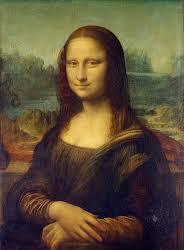
There, he painted a series of portraits that included "La Giocondo," a 21-by-31-inch work thats's best known today as "Mona Lisa(Mona=my, Lisa=lady)."
Painted between approximately 1503 and 1506, the woman depicted-especially because of her mysterious slight smile-has been the subject of speculation for centuries.
In the past she was often thought to be Mona Lisa Gherardini, a courtesan, wife of Florentine merchant Francisco del Giocondo. Today, the portrait-the only da Vinci portrait from this period that survives-is housed at the Louvre Museum in Paris, France, where it attracts million of visitors every year.
The Mona Lisa is also one of the most valuable paintings in the world. it holds the Guineness World Record for the highest known insurance valuation in history at $100 million in 1962, which is worth nearly $820 million in 2018.
0 notes
Quote
About
Authorities in the western US state Oregon have euthanized four sea lions in the last month as part of a program to protect salmon runs and steelhead trout that are at risk of going extinct
the lethal removals of the California sea lions began in mid December and would continue through May.
the salmon run is the time when salmon, which have migrated from the ocean, swim to the upper reaches of rivers where they spawn gravel beds.
After spawning, all Pacific salmon and Atlantic salmon die, and the salmon life cycle starts over again.
Spawn is the eggs and sperm released or deposited into water by aquatic animals. spawn refers to the process of releasing the eggs and sperm, and the act of both sexes is called spawning. Most aquatic animals, except for aquatic mammals and reptiles, reproduce through the process of spawning.
Spawn consists of the reproductive cells (gametes) of many aquatic animals, some of which will become fertilized and produce offspring. The process of spawning typically involves females releasing ova (unfertilized eggs) into the water, often in large quantities, while males simultaneously or sequentially release spermatozoa to fertilize the eggs.
Reason of doing so?
California sea lions killed to protect migrating fish.
"Our scientists believe that if these sea lions aren't removed, that run of steelhead could go extinct anytime,"
the killings were necessary to save migrating steelhead that have been ravaged by the sea lions in recent years as they swim upstream from the ocean to spawn.
salmon were also threatened by the sea mammals, whose population has exploded since the Marine Mammal Protection Act was passed in 1972.
"Two years ago, the sea lions destroyed 25 percent of that wild steelhead run,"
"They killed about 512 fish and that represented about one fourth of all the fish that we had left."
Actions that were taken
state was authorized to kill up to 93 sea lions a year but no more than 40 would be removed this year.
Authorities in the past have used various non-lethal techniques, including loud noise or rubber buckshot, but the animals have adapted and learned to avoid the threat.
http://www.khabrikutta.tk/2019/01/why-usa-is-killing-california-sea-lion.html
0 notes
Link
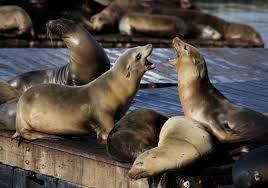

About
Authorities in the western US state Oregon have euthanized four sea lions in the last month as part of a program to protect salmon runs and steelhead trout that are at risk of going extinct
the lethal removals of the California sea lions began in mid December and would continue through May.
the salmon run is the time when salmon, which have migrated from the ocean, swim to the upper reaches of rivers where they spawn gravel beds.
After spawning, all Pacific salmon and Atlantic salmon die, and the salmon life cycle starts over again.
Spawn is the eggs and sperm released or deposited into water by aquatic animals. spawn refers to the process of releasing the eggs and sperm, and the act of both sexes is called spawning. Most aquatic animals, except for aquatic mammals and reptiles, reproduce through the process of spawning.
Spawn consists of the reproductive cells (gametes) of many aquatic animals, some of which will become fertilized and produce offspring. The process of spawning typically involves females releasing ova (unfertilized eggs) into the water, often in large quantities, while males simultaneously or sequentially release spermatozoa to fertilize the eggs.

Reason of doing so?
California sea lions killed to protect migrating fish.
"Our scientists believe that if these sea lions aren't removed, that run of steelhead could go extinct anytime,"
the killings were necessary to save migrating steelhead that have been ravaged by the sea lions in recent years as they swim upstream from the ocean to spawn.
salmon were also threatened by the sea mammals, whose population has exploded since the Marine Mammal Protection Act was passed in 1972.
"Two years ago, the sea lions destroyed 25 percent of that wild steelhead run,"
"They killed about 512 fish and that represented about one fourth of all the fish that we had left."
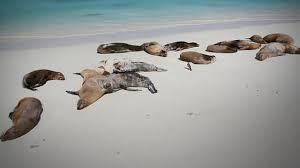
Actions that were taken
state was authorized to kill up to 93 sea lions a year but no more than 40 would be removed this year.
Authorities in the past have used various non-lethal techniques, including loud noise or rubber buckshot, but the animals have adapted and learned to avoid the threat.
0 notes
Link
Great Indian Bustard
A large bird with a horizontal body and long bare legs, giving it an ostrich like appearance, this bird is among the heaviest of the flying birds.
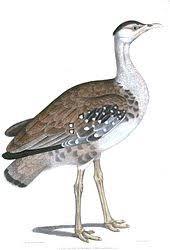
About
These birds are often found associated in the same habitat as blackbuck. It is protected under Wildlife Protection Act 1972 of India.
In India, the bird was historically found in Punjab, Haryana, Uttar Pradesh, Madhya Pradesh, Chhattisgarh, Odisha, Andra Pradesh, Rajasthan, Gujarat, Maharshtra, Karnataka, and Tamil Nadu.
Today the bustard is restricted to isolated pockets in Andhra Pradesh, Gujarat, Karnataka, Maharashtra, Madhya Pradesh and Rajashthan(shared with Pakistan) where 95% are located in Rajasthan.
Protected area
1. Desert National Park Sanctuary - Rajasthan.
2. Rollapadu Wildlife Sanctuary - Andhra Pradesh.
3. Karera Wildlife Sanctuary - Madhya Pradesh.
Wildlife (Protection )act, 1972
To protect the threatened species, India has created the Wildlife Protection Act 1972. This includes lists of plants and animals categorized according to he threat to their survival. In 972, the Wildlife (Protection ) Act (WPA) was enacted for the purpose of protection of wild animals, birds and plants.
It was made to prevent hunting and also to control trade in wild life products. Wildlife laws divide species into schedules ranked from 1 to 5. Section 9 of WPA prohibits hunting of any wild animal specified in Schedule 1,2,3,4. However the Chief Wild Life Warden may permit hunting of wild animals in certain cases. Schedule 1 members are the best protected, in theory, with severe punishments meted out to those who hunt them.

Why in news
Wildlife activists have called for enforcement of recovery plan for the country's most critically endangered bird - Great Indian Bustard.
Once the contender for becoming India's national bird, the Great Indian Bustard is now facing extinction.
What is critically endangered
Critically endangered is the highest risk category assigned by the IUCN (International Union for Conversation of Nature ) Red List to wild species.
Means a species numbers have decreased, or will decrease by 80% within three generations. It is therefore considered to be facing an extremely high risk of extinction in the wild.
The current total population of the Great Indian Bustard now estimated to be less than 100.
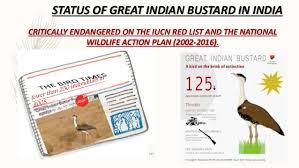
Plan to save Great Indian Bustard
It has also been identified as one of the species for the recovery programme under the Integrated Development of Wildlife Habitant Of the Ministry of Environment and Forests, Government of India.
Project Great Indian Bustard - state of Rajasthan - identified and fencing off bustard breeding grounds in existing protected areas as well as provide secure breeding enclosure areas outside protected areas.
0 notes
Quote
Great Indian Bustard
A large bird with a horizontal body and long bare legs, giving it an ostrich like appearance, this bird is among the heaviest of the flying birds.
About
These birds are often found associated in the same habitat as blackbuck. It is protected under Wildlife Protection Act 1972 of India.
In India, the bird was historically found in Punjab, Haryana, Uttar Pradesh, Madhya Pradesh, Chhattisgarh, Odisha, Andra Pradesh, Rajasthan, Gujarat, Maharshtra, Karnataka, and Tamil Nadu.
Today the bustard is restricted to isolated pockets in Andhra Pradesh, Gujarat, Karnataka, Maharashtra, Madhya Pradesh and Rajashthan(shared with Pakistan) where 95% are located in Rajasthan.
Protected area
1. Desert National Park Sanctuary - Rajasthan.
2. Rollapadu Wildlife Sanctuary - Andhra Pradesh.
3. Karera Wildlife Sanctuary - Madhya Pradesh.
Wildlife (Protection )act, 1972
To protect the threatened species, India has created the Wildlife Protection Act 1972. This includes lists of plants and animals categorized according to he threat to their survival. In 972, the Wildlife (Protection ) Act (WPA) was enacted for the purpose of protection of wild animals, birds and plants.
It was made to prevent hunting and also to control trade in wild life products. Wildlife laws divide species into schedules ranked from 1 to 5. Section 9 of WPA prohibits hunting of any wild animal specified in Schedule 1,2,3,4. However the Chief Wild Life Warden may permit hunting of wild animals in certain cases. Schedule 1 members are the best protected, in theory, with severe punishments meted out to those who hunt them.
Why in news
Wildlife activists have called for enforcement of recovery plan for the country's most critically endangered bird - Great Indian Bustard.
Once the contender for becoming India's national bird, the Great Indian Bustard is now facing extinction.
What is critically endangered
Critically endangered is the highest risk category assigned by the IUCN (International Union for Conversation of Nature ) Red List to wild species.
Means a species numbers have decreased, or will decrease by 80% within three generations. It is therefore considered to be facing an extremely high risk of extinction in the wild.
The current total population of the Great Indian Bustard now estimated to be less than 100.
Plan to save Great Indian Bustard
It has also been identified as one of the species for the recovery programme under the Integrated Development of Wildlife Habitant Of the Ministry of Environment and Forests, Government of India.
Project Great Indian Bustard - state of Rajasthan - identified and fencing off bustard breeding grounds in existing protected areas as well as provide secure breeding enclosure areas outside protected areas.
http://www.khabrikutta.tk/2019/01/the-great-indian-bustard-birds.html
0 notes
Link
History of Hyderabad
After the siege of Golconda by Mughal Empire in 1687, the region was renamed as Deccan Subah and in 1713 Qamar-ud-din Khan(later known as Asaf Jah I or Nizam I) was appointed its Subahdar and bestowed with the title of Nizam-ul-Mulk by the Mughal Emperor.
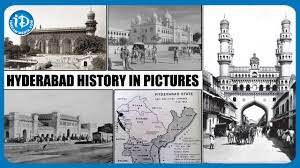
Hyderabad's effective independence is dated to 1724. In 1798, Hyderabad became the first Indian princely state to accede to British protection under the policy of Subsidiary Alliance instituted by Arthur Wellesley and thus named as Hyderabad state.
The State of Hyderabad under the leadership of its 7th Nizam, Mir Osman Ali, was the largest and most prosperous of all the princely states in India.
In the Indian Independence Act 1947 the British abandoned all alliances, leaving the states with the option of opting for full independence.
However, by 1948 almost all had acceded to either India or Pakistan. One major exception was that of Hyderabad, where the Nizam, Osman Ali Khan, Asif Jah VII, a Muslim ruler who presided over a largely Hindu population, chose independence.
The Indian government, anxious to avoid what it termed a Balkanization of what had been the Indian Empire, was determined to effect the integration of Hyderabad into the new Indian Union.
Diplomacy
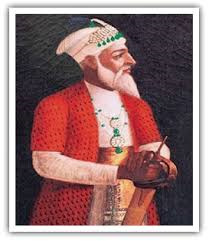
The Nizam of Hyderabad initially approached the British government with a request to take oth the status of an independent constitutional monarchy under the British Commonwealth of Nations. This request was However rejected by the last Governor-General of India, Lord Mountbatten.
At the time of the British withdrawal from India, the Nizam announced that he did not intend to join either new dominion.
Accordingly, the Indian government offered Hyderabad a Standstill agreement which made an assurance that the status quo would be maintained and no military action would be taken for one year.
In the summer of 1948, Indian officials,especially patel, signland an intention to invade; British encouraged India to resolve the issue without the use of force, but refused Nizam's request to help.
Operation Done by Indian Army

The Nizam was in a week position as his army numbered only 24,000 men, there were about 200,000 irregular militia called the Razakars. It is reported thet the Nizam recieved arms supplies from Pakistan and from the Portuguese administration based in Goa.
On 6 September an Indian police post near Chillakallu village came under heavy fire from Razakar units. The Indian Army command sent a squadron of the Poona Horse led by Abhey Singh and a Company of 2/5 Gurkha Rifles to investigate who were also fired upon by the Razakars.
The tanks of the Poona Horse then chased the Razakars to Kodar, in Hyderabad territory. In a brief action the Poona Horse destroyed one armoured car and forced the surrender of the state garrison at Kodar.
On recieving directions from the government to seize and annex Hyderabad, the Indian army came up with the Goddard plan(laid out by Lt. Gen. E. N. Goddard). The plan envisaged two main thrusts- from Vijayawada in the East and Solapur in the West. The attack from Solapur was led by Major General J.N. Chaudhari and was composed of four task forces:
1. Strike Force comprising a mix of fast moving infantry, cavalry and light artillery.
2. Smash Force consisting of predominantly armoured units and artillery.
3. Kill Force composed of infantry and engineering units.
4. Vir Force which comprised infantry, anti-tank and engineering units.
The attack from Vijayawada was led by Major General A.A. Rudra and comprised the 2/5 Gurkha Rifles, one squadron of the 17th (Poona) Horse, and a troop from the 19th Field Battery along with engineering and ancillary units.
The date for the attack was fixed as 13 September. The first battle was fought at Naldurg Fort on the Solapur Secundarabad Highway.
How Success was achieved
In the early hours of 17 September , the Indian army entered Bidar. By the morning of the 5th day of hostilities, it had become clear that the Hyderabad army and the Razakars had been routed on all fronts and with extremely heavy casualties.
At 5 pm on 17 September the Nizam announced ceasefire thus ending the armed action.
0 notes
Quote
History of Hyderabad
After the siege of Golconda by Mughal Empire in 1687, the region was renamed as Deccan Subah and in 1713 Qamar-ud-din Khan(later known as Asaf Jah I or Nizam I) was appointed its Subahdar and bestowed with the title of Nizam-ul-Mulk by the Mughal Emperor.
Hyderabad's effective independence is dated to 1724. In 1798, Hyderabad became the first Indian princely state to accede to British protection under the policy of Subsidiary Alliance instituted by Arthur Wellesley and thus named as Hyderabad state.
The State of Hyderabad under the leadership of its 7th Nizam, Mir Osman Ali, was the largest and most prosperous of all the princely states in India.
In the Indian Independence Act 1947 the British abandoned all alliances, leaving the states with the option of opting for full independence.
However, by 1948 almost all had acceded to either India or Pakistan. One major exception was that of Hyderabad, where the Nizam, Osman Ali Khan, Asif Jah VII, a Muslim ruler who presided over a largely Hindu population, chose independence.
The Indian government, anxious to avoid what it termed a Balkanization of what had been the Indian Empire, was determined to effect the integration of Hyderabad into the new Indian Union.
Diplomacy
The Nizam of Hyderabad initially approached the British government with a request to take oth the status of an independent constitutional monarchy under the British Commonwealth of Nations. This request was However rejected by the last Governor-General of India, Lord Mountbatten.
At the time of the British withdrawal from India, the Nizam announced that he did not intend to join either new dominion.
Accordingly, the Indian government offered Hyderabad a Standstill agreement which made an assurance that the status quo would be maintained and no military action would be taken for one year.
In the summer of 1948, Indian officials,especially patel, signland an intention to invade; British encouraged India to resolve the issue without the use of force, but refused Nizam's request to help.
Operation Done by Indian Army
The Nizam was in a week position as his army numbered only 24,000 men, there were about 200,000 irregular militia called the Razakars. It is reported thet the Nizam recieved arms supplies from Pakistan and from the Portuguese administration based in Goa.
On 6 September an Indian police post near Chillakallu village came under heavy fire from Razakar units. The Indian Army command sent a squadron of the Poona Horse led by Abhey Singh and a Company of 2/5 Gurkha Rifles to investigate who were also fired upon by the Razakars.
The tanks of the Poona Horse then chased the Razakars to Kodar, in Hyderabad territory. In a brief action the Poona Horse destroyed one armoured car and forced the surrender of the state garrison at Kodar.
On recieving directions from the government to seize and annex Hyderabad, the Indian army came up with the Goddard plan(laid out by Lt. Gen. E. N. Goddard). The plan envisaged two main thrusts- from Vijayawada in the East and Solapur in the West. The attack from Solapur was led by Major General J.N. Chaudhari and was composed of four task forces:
1. Strike Force comprising a mix of fast moving infantry, cavalry and light artillery.
2. Smash Force consisting of predominantly armoured units and artillery.
3. Kill Force composed of infantry and engineering units.
4. Vir Force which comprised infantry, anti-tank and engineering units.
The attack from Vijayawada was led by Major General A.A. Rudra and comprised the 2/5 Gurkha Rifles, one squadron of the 17th (Poona) Horse, and a troop from the 19th Field Battery along with engineering and ancillary units.
The date for the attack was fixed as 13 September. The first battle was fought at Naldurg Fort on the Solapur Secundarabad Highway.
How Success was achieved
In the early hours of 17 September , the Indian army entered Bidar. By the morning of the 5th day of hostilities, it had become clear that the Hyderabad army and the Razakars had been routed on all fronts and with extremely heavy casualties.
At 5 pm on 17 September the Nizam announced ceasefire thus ending the armed action.
http://www.khabrikutta.tk/2019/01/how-hyderabad-became-part-of-india.html
0 notes
Quote
The Biggest Victory Yet For The 'Namami Ganga'
Namami Gange Programmme, an integrated conservation mission, was approved as the flagship programme by the government in June 2014 with a budget outlay of ₹20,000 crore to accomplish the twin objectives of effective abatement of pollution, conservation, and rejuvenation of the Ganga.
Causes
The July 2013 report of the Central Pollution Control Board(CPCB) shows unacceptable levels of faecal coliform, a clear sign of human excreta, all along the river's mainstream
According to CPCB's 2013 report, 2,723 million litres per day(mld) of domestic sewage is discharged by cities located along the river.
Sewage Issue
Approximately 3 billion(3arab) liters of raw, untreated sewage are dumped in the river on a daily basis.
The amount has more than doubled in the last 20 years and experts predict another 100% increase in the following 20 years.
The Biggest issue
Kanpur unabashedly dumps poisonous industrial effluent into the Ganga, while Varanasi release its untreated wastewater in absence of sewerage network
Sisamau Nala, the largest open drain in Kanpur, is infamous for many reasons.
NOTES
Sewage from the drain, which is reportedly 128 years old, used to be dumped into the river through the Bhairo Ghat.
While 8 crore litres of the sewage had been successfully routed earlier, routing the remaining 6 crore litres proved to be an arduous task.
However, this has now been achieved by Uttar Pradesh's Jal Nigam and Namami Gange engineers
Sewage from the Sisamau Nala drain is now being diverted to the sewage treatment plant in Jajmou from Bhairo Ghat in Kanpur.
Till now, nearly eight crore litres of sewage from the drain was being diverted to the sewage treatment plant(STP), but handling the remaining six crore litres was a challenging task
CREATING SEWAGE TREATMENT CAPACITY
63 sewerage management projects under implementation in the States of Uttarakhand, Uttar Pradesh, Bihar, Jharkhand and West Bengal. 12 new sewerage management Projects Launched in these states
Work is under construction for creating Sewerage capacity of 1187.33(mld). Hybrid Annuity PPP Model based two projects has been initiated for Jagjeetpur, Haridwar and Ramanna, Varanasi.
http://www.khabrikutta.tk/2018/12/ganga-get-rid-of-its-largest-drainage.html
0 notes
Link
The Biggest Victory Yet For The 'Namami Ganga'
Namami Gange Programmme, an integrated conservation mission, was approved as the flagship programme by the government in June 2014 with a budget outlay of ₹20,000 crore to accomplish the twin objectives of effective abatement of pollution, conservation, and rejuvenation of the Ganga.
Causes
The July 2013 report of the Central Pollution Control Board(CPCB) shows unacceptable levels of faecal coliform, a clear sign of human excreta, all along the river's mainstream
According to CPCB's 2013 report, 2,723 million litres per day(mld) of domestic sewage is discharged by cities located along the river.
Sewage Issue
Approximately 3 billion(3arab) liters of raw, untreated sewage are dumped in the river on a daily basis.
The amount has more than doubled in the last 20 years and experts predict another 100% increase in the following 20 years.
The Biggest issue
Kanpur unabashedly dumps poisonous industrial effluent into the Ganga, while Varanasi release its untreated wastewater in absence of sewerage network
Sisamau Nala, the largest open drain in Kanpur, is infamous for many reasons.
NOTES
Sewage from the drain, which is reportedly 128 years old, used to be dumped into the river through the Bhairo Ghat.
While 8 crore litres of the sewage had been successfully routed earlier, routing the remaining 6 crore litres proved to be an arduous task.
However, this has now been achieved by Uttar Pradesh's Jal Nigam and Namami Gange engineers
Sewage from the Sisamau Nala drain is now being diverted to the sewage treatment plant in Jajmou from Bhairo Ghat in Kanpur.
Till now, nearly eight crore litres of sewage from the drain was being diverted to the sewage treatment plant(STP), but handling the remaining six crore litres was a challenging task
CREATING SEWAGE TREATMENT CAPACITY
63 sewerage management projects under implementation in the States of Uttarakhand, Uttar Pradesh, Bihar, Jharkhand and West Bengal. 12 new sewerage management Projects Launched in these states
Work is under construction for creating Sewerage capacity of 1187.33(mld). Hybrid Annuity PPP Model based two projects has been initiated for Jagjeetpur, Haridwar and Ramanna, Varanasi.
0 notes
Quote
History of Goa
1510- Goa conquered by Albuquerque from Ismail Adil Shah, sultan of Bijapur
Goa was the base for Albuquerque's conquest of Malacca in 1511 and Hormuz in 1515
Albuquerque intended it to be a colony and a naval base, distinct from the fortified factories established in certain Indian seaports.
Goa was made capital of the Portuguese vice-kingdom in Asia, and the other Portuguese in India, Malacca and other bases in Indonesia, East Timor, the Persian Gulf, Macau in china and trade bases in japan were under the suzerainty of its viceroy
1920s onwards- Sporadic protests against the Portuguese rule.....
Goan National Congress was formed
1940s- Along with the national movement, Goans protested for independence too, but the suppression from government was brutal.
After the fall of British India in 1947 and the emergence of the Indian Union, the Indian government demanded the Portuguese hand over their colonies to the Union
1950- India asked Portugal to open negotiations about the future of Portuguese colonies in India, Lisbon rebuffed it, saying that its territory on the Indian subcontinent was not a colony but part of metropolitan Portugal and hence its transfer was non-negotiable
Portugal also said that the Goan Catholics would not be safe if it left
Portugal conveniently overlooked the fact over 60% of Goans were Hindus
1953 - India broke off diplomatic relations with Portugal in protest
1954- The United Front of Goans and Azad Gomantak Dal took control of the enclave of Dadra and Nagar Haveli
1955- Peaceful satygrahis were brutally suppressed in Goa 30 protestors killed
1955- India started an economics blockade against Goa, Daman, and Diu
VK Krishna Menon, India's then defence minister and head of India's UN delegations, stated that India had not "abjured the use of force" in Goa
Revolutionary groups
Azad Gomantak Dal - carried out series of attacks on Portuguese police stations and banks, military outposts
Goa Liberation Army - credited with many other blasts and raids, and played a pivotal role in defending the bridges at the time of Indian invasion
On 24 November 1961, the Sabarmati, a passenger boat passing between the Portuguese - held island of Anjadiv and the Indian port of Kochi, was fired upon by Portuguese ground troops, resulting in injuries to the chief engineer of the boat, as well as the death of a passenger
This incident gave Nehru government the immediate alibi for armed intervention
Main Battle-Between 17-19 December 1961
The armed action , code-named Operations Vijay by the Indian government, involved air, sea and land strikes for over 36 hours
It was a decisive victory for India, ending 451 years of Portuguese colonial rule in Goa, Daman and Diu
Twenty two Indians and thirty Portuguese were killed in the fighting.
USA= west - Condemned the action
USSR- Supported India
In 1963, the parliament of India passed the 12th Amendment Act to the constitution of India, formally integrating the captured territories into the Indian union
Goa,Daman an Diu became a Union territory
Dadra and Nagar Haveli, which was previously a part of the Estado da India, but independence between 1954 and 1961, became a separate union territory.
Portugal recognised Goa's accession into the Indian union only in 1974
http://www.khabrikutta.tk/2018/11/how-goa-become-part-of-india.html
0 notes
Link
History of Goa
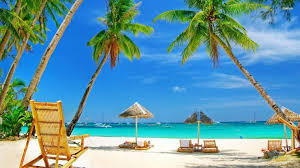
1510- Goa conquered by Albuquerque from Ismail Adil Shah, sultan of Bijapur
Goa was the base for Albuquerque's conquest of Malacca in 1511 and Hormuz in 1515
Albuquerque intended it to be a colony and a naval base, distinct from the fortified factories established in certain Indian seaports.
Goa was made capital of the Portuguese vice-kingdom in Asia, and the other Portuguese in India, Malacca and other bases in Indonesia, East Timor, the Persian Gulf, Macau in china and trade bases in japan were under the suzerainty of its viceroy
1920s onwards- Sporadic protests against the Portuguese rule.....
Goan National Congress was formed
1940s- Along with the national movement, Goans protested for independence too, but the suppression from government was brutal.
After the fall of British India in 1947 and the emergence of the Indian Union, the Indian government demanded the Portuguese hand over their colonies to the Union
1950- India asked Portugal to open negotiations about the future of Portuguese colonies in India, Lisbon rebuffed it, saying that its territory on the Indian subcontinent was not a colony but part of metropolitan Portugal and hence its transfer was non-negotiable

Portugal also said that the Goan Catholics would not be safe if it left
Portugal conveniently overlooked the fact over 60% of Goans were Hindus
1953 - India broke off diplomatic relations with Portugal in protest
1954- The United Front of Goans and Azad Gomantak Dal took control of the enclave of Dadra and Nagar Haveli
1955- Peaceful satygrahis were brutally suppressed in Goa 30 protestors killed
1955- India started an economics blockade against Goa, Daman, and Diu
VK Krishna Menon, India's then defence minister and head of India's UN delegations, stated that India had not "abjured the use of force" in Goa
Revolutionary groups
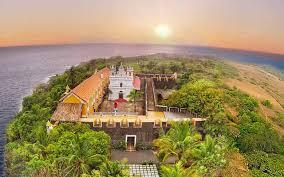
Azad Gomantak Dal - carried out series of attacks on Portuguese police stations and banks, military outposts
Goa Liberation Army - credited with many other blasts and raids, and played a pivotal role in defending the bridges at the time of Indian invasion

On 24 November 1961, the Sabarmati, a passenger boat passing between the Portuguese - held island of Anjadiv and the Indian port of Kochi, was fired upon by Portuguese ground troops, resulting in injuries to the chief engineer of the boat, as well as the death of a passenger
This incident gave Nehru government the immediate alibi for armed intervention
Main Battle-Between 17-19 December 1961
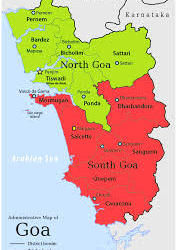
The armed action , code-named Operations Vijay by the Indian government, involved air, sea and land strikes for over 36 hours
It was a decisive victory for India, ending 451 years of Portuguese colonial rule in Goa, Daman and Diu
Twenty two Indians and thirty Portuguese were killed in the fighting.
USA= west - Condemned the action
USSR- Supported India

In 1963, the parliament of India passed the 12th Amendment Act to the constitution of India, formally integrating the captured territories into the Indian union
Goa,Daman an Diu became a Union territory
Dadra and Nagar Haveli, which was previously a part of the Estado da India, but independence between 1954 and 1961, became a separate union territory.
Portugal recognised Goa's accession into the Indian union only in 1974
0 notes
Photo

(via youtube- desktop view app)
0 notes
Link
The Kingdom of Sikkim was a monarchy from 1642 to 16 May 1975.It was ruled by Chogyals of the Namgyal dynasty.Religious and cultural ties to Tibet were strong.
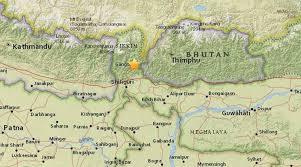
Gorkhas of Nepal attacked and occupied Sikkim in 18th century. Eventually Sikkim sided/aligned with British EIC as they had Nepal as the common enemy. British India signed Treaty of Titalia with Sikkim in 1817- former territories, which the Nepalis captured, were restored to Sikkim.
In culture and religion, Sikkim was linked closely eith Tibet, from which its first king migrated, and Bhutan, with which it shares borders.
The presence of a large ethnic Nepal(Hindu) population also leads to cultural linkages with Nepal.
Relations with British deteriorted over Darjeeling. British had to send an army in 1850 to Sikkim .
British protectorate 1890-1950
Indian protectorate till 1950-1975
Around 1947- Nepalese population constituted 75% of the total population while the Chogyals belonged to the minority Bhutia-Lepcha community.
Indo-Sikkim Treaty, 1950 :
Treaty signed between the maharaja of Sikkim, Sir Tashi Namgyal, and a representative of the Indian Government. It recognized sikkim as a protectorate of India. Sikkim Congress leader Kazi Lendup Dorji was elected as he Chief Minister of the state. The Chogyal however still remained as the constitutional figure head monarch in the new setup.
Sikkim's defence, external affairs and communication requirements were to be looked after by India but the kingdom was to "enjoy automony in regard to its internal affairs".
Palace Intrigue?
Sikkim's last monarch Palden Thondup Namgyal married an American beauty, Hope Cooke in 1963. It has been said that she took over the governance of Sikkim after her marriage. She was also accused of being CIA agent.
The geopolitics of the region were transforming in dangerous manners:
Rising communism in West Bengal and Nepal
Rise of Chinese aggression in Tibet
The rising protests by the Nepali community in Sikkim
Cho La Incident, 1967- the chinese army infiltrated into Sikkim. Sikkim could turn out to be china's gateway to North-East of India.
The Indian Government was not in a mood to take chances in Sikkim. Therefore heavy demonstrations were organised by political parties of Sikkim around Gangtok to put pressure on the Chogyals, with the help of monetary support from the Indian government and main role of IB- Ajit Doval.
May 8 Agreement of 1973

This was an agreement entered into by the Chogals, the Government of India and leaders of the political parties of Sikkim following complete breakdown of the law and order situation.
There had been serious outbursts of violence in Gangtok following agitations for "a more democratic constitution" and "greater legislative" and executive powers for the elected representatives of the people".
Both were provided in the Agreement.
In addition, the Indian Government was "requested" to take "responsibility" for law and order and appoint a chief executive or head of administration in Sikkim.
The Indian chief executive held complete administrative authority.
Draft Constitution: Following the May 8 Agreement, Indian Government sent a constitutional adviser to draft a constitution of Sikkim.
Chogyal vehemently objected to this draft.
The April 1974 elections resulted in a victory for the India-friendly Sikkim National Congress. The new government sought an increase in civil and political liberties, but was suppressed by the Chogyal.

September 1974 - the talks/draft bill for merger of Sikkim with India, aroused a deep controversy in the national press.
Sikkim was made an Associate State
April 9, 1975 - For obscure reasons, a military operation was launched o the Chogyal's palace.
Sikkim Guards-a force of about 300 men controlled by the Chogyal - were overpowered within 30 minutes by Indian Army. The force was disbanded and the Chogyal was placwd under house arrest.
Consequently, the Sikkim Assembly met on April 10, 1975 and abolished the institution of the Chogyal.
It declared Sikkim "a constituent unit of India, enjoying a democratic and fully responsible government".
A referendum was sought five days later for the approval of the people.
This special poll, which the Chogyal terms "illegal", was endrosed by over 60,000 votes with 1,496 against.
On April 22, 1975, the Government of India introduced the 36th Ammendment to the Constitution making Sikkim the 22nd state of India with effect from April 26.
Roughly one month later, it became official: On May 16, Sikkim was declared India's 22nd State.
It proves true to the statement- " A nation has no permanent friends and no permanent enemies, only permanent interests." -
- Winston Churchill
0 notes
Quote
The Kingdom of Sikkim was a monarchy from 1642 to 16 May 1975.It was ruled by Chogyals of the Namgyal dynasty.Religious and cultural ties to Tibet were strong.
Gorkhas of Nepal attacked and occupied Sikkim in 18th century. Eventually Sikkim sided/aligned with British EIC as they had Nepal as the common enemy. British India signed Treaty of Titalia with Sikkim in 1817- former territories, which the Nepalis captured, were restored to Sikkim.
In culture and religion, Sikkim was linked closely eith Tibet, from which its first king migrated, and Bhutan, with which it shares borders.
The presence of a large ethnic Nepal(Hindu) population also leads to cultural linkages with Nepal.
Relations with British deteriorted over Darjeeling. British had to send an army in 1850 to Sikkim .
British protectorate 1890-1950
Indian protectorate till 1950-1975
Around 1947- Nepalese population constituted 75% of the total population while the Chogyals belonged to the minority Bhutia-Lepcha community.
Indo-Sikkim Treaty, 1950 :
Treaty signed between the maharaja of Sikkim, Sir Tashi Namgyal, and a representative of the Indian Government. It recognized sikkim as a protectorate of India. Sikkim Congress leader Kazi Lendup Dorji was elected as he Chief Minister of the state. The Chogyal however still remained as the constitutional figure head monarch in the new setup.
Sikkim's defence, external affairs and communication requirements were to be looked after by India but the kingdom was to "enjoy automony in regard to its internal affairs".
Palace Intrigue?
Sikkim's last monarch Palden Thondup Namgyal married an American beauty, Hope Cooke in 1963. It has been said that she took over the governance of Sikkim after her marriage. She was also accused of being CIA agent.
The geopolitics of the region were transforming in dangerous manners:
Rising communism in West Bengal and Nepal
Rise of Chinese aggression in Tibet
The rising protests by the Nepali community in Sikkim
Cho La Incident, 1967- the chinese army infiltrated into Sikkim. Sikkim could turn out to be china's gateway to North-East of India.
The Indian Government was not in a mood to take chances in Sikkim. Therefore heavy demonstrations were organised by political parties of Sikkim around Gangtok to put pressure on the Chogyals, with the help of monetary support from the Indian government and main role of IB- Ajit Doval.
May 8 Agreement of 1973
This was an agreement entered into by the Chogals, the Government of India and leaders of the political parties of Sikkim following complete breakdown of the law and order situation.
There had been serious outbursts of violence in Gangtok following agitations for "a more democratic constitution" and "greater legislative" and executive powers for the elected representatives of the people".
Both were provided in the Agreement.
In addition, the Indian Government was "requested" to take "responsibility" for law and order and appoint a chief executive or head of administration in Sikkim.
The Indian chief executive held complete administrative authority.
Draft Constitution: Following the May 8 Agreement, Indian Government sent a constitutional adviser to draft a constitution of Sikkim.
Chogyal vehemently objected to this draft.
The April 1974 elections resulted in a victory for the India-friendly Sikkim National Congress. The new government sought an increase in civil and political liberties, but was suppressed by the Chogyal.
September 1974 - the talks/draft bill for merger of Sikkim with India, aroused a deep controversy in the national press.
Sikkim was made an Associate State
April 9, 1975 - For obscure reasons, a military operation was launched o the Chogyal's palace.
Sikkim Guards-a force of about 300 men controlled by the Chogyal - were overpowered within 30 minutes by Indian Army. The force was disbanded and the Chogyal was placwd under house arrest.
Consequently, the Sikkim Assembly met on April 10, 1975 and abolished the institution of the Chogyal.
It declared Sikkim "a constituent unit of India, enjoying a democratic and fully responsible government".
A referendum was sought five days later for the approval of the people.
This special poll, which the Chogyal terms "illegal", was endrosed by over 60,000 votes with 1,496 against.
On April 22, 1975, the Government of India introduced the 36th Ammendment to the Constitution making Sikkim the 22nd state of India with effect from April 26.
Roughly one month later, it became official: On May 16, Sikkim was declared India's 22nd State.
It proves true to the statement- " A nation has no permanent friends and no permanent enemies, only permanent interests." -
- Winston Churchill
http://www.khabrikutta.tk/2018/11/how-sikkim-became-part-of-india.html
0 notes
Link
1. Terrifying bridges
a. Eshima Ohashi Bridge-Japan

It was built from 1997-2004. It is the largest rigid-frame bridge in japan and third largest in the world. The shimane side has a gradient of 6.1% and Tottori side of 5.1%. The bidge connect Matsue, Shimane Prefacture and Sakaiminato, Tottori Prefecture over Nakaumi lake.
b. Zhangjiajie Glass Bridge-China
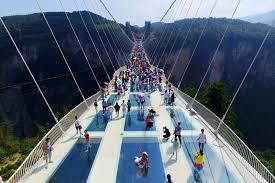
amzn_assoc_placement = "adunit0"; amzn_assoc_search_bar = "true"; amzn_assoc_tracking_id = "bosssharma-20"; amzn_assoc_search_bar_position = "bottom"; amzn_assoc_ad_mode = "search"; amzn_assoc_ad_type = "smart"; amzn_assoc_marketplace = "amazon"; amzn_assoc_region = "US"; amzn_assoc_title = "Shop Related Products"; amzn_assoc_default_search_phrase = "haritash"; amzn_assoc_default_category = "All"; amzn_assoc_linkid = "024b2b39fdfe9e5859334403748b955c";
The bridge is glass bottomed an is transparent. The bridge, opened to the public on August 20,2016, measures (430*6)meters and is suspended about 300 metersabove the ground. The bridge was designed by Israeli architect Haim Dotan. When it opened it was the longest and tallest glass bottomed bridge in the world.
To build the bridge, engineers erected 4 supported pillars on the edges of the walls of the canyon. The bridge is made of a metal frame with more than 120 glass panels. Each of this panel is 3-layered and is a 2-inch thick slab of tempered glass. There are 3 long wings attached to the underside of the bridge. Also there is a provision for making a 285 meter bungee-jump.
The bridge has set ten world record spanning its design and constructions.
2. Ponte Vecchio Bridge-(Florence, Italy)
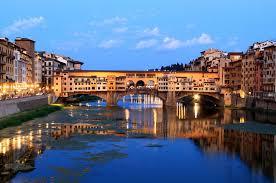
It is a medieval stone closed spandrel segmental arch bridge over the Arno river. Their are shops of jewelers, art dealer and souvenir sellers.The bridge consists of three segmental arches: the main arch has a span of 30 meter(98 feet) the two side arches each span 27 meters(89 feet). The rise of the arches is between 3.5 and 4.4 meter(11.5 to 14.5 feet), and the span-to-rise ratio 5:1 .
During World War || , the Ponte Vechhio was not destroyed by Germans(Hitler) on August 4, 1944. Destruction of the buildings at both ends have since been rebuilt using a combination of original and modern design .
3. Moses Bridge- Netherland

The Moses bridge divides water. Although it is found in the netherland from where Moses is said to have parted the Red Sea- this architectural wonder provides visitors with an updated spin on the classic tale.
Sunken into the middle of a moat, Moses bridge allows visitors to cross the water on their way to 17-century Fort De Roovere, one of many fortresses that was built near the west Brabant Water Line Region to prevent French and Spanish invasions.
4. Illuminating bridge-
a. Banpo Bridge/Moonlight Fountain Bridge- South Korea

It is a major bridge in downtown Seoul over the Han River, connecting the Seocho-Yongsan districts. The bridge is on top of Jamsu Bridge, forming the upper half of a double-deck bridge; it is first double deck bridge built in South Korea. During periods of rainfall, the Jamsu bridge is designed to submerge as the water level of the river rises, as the lower deck lies close to the waterline.
The bridge was built as a girder bridge and was completed in 1982.
It is the world's longest fountain bridge that set a Guinness World Record with nearly 10,000 LED nozzles that run along both sides that is 1,140 m long , shooting out 190 tons of water per minute. Installed in September 2009 on the Banpo bridge, former mayor of Seoul Oh Sehoon declared that the bridge will further beautify the city.
b. High Trestle Bridge- (Lowa,USA)

It is a rail trail running from Ankeny-Woodward in central Lowa, designed by engineering firm Snyder and Associates in 2006.
The 40m high and nearly 770m long trestle bridge provides scenic views of the Des Moines River Valley.
Lightning remains until 10.30pm in summer and 9pm in winter.
April 2, 2015, British Broadcasting Corporations(BBC) designated the High Trestle Trail bridge as one of the eight amazing footbridges in the world.
5. Moving Bridge
a. Rolling Bridge- (Paddington Basin, London)
It is a type of curling movable bridge completed in 2004 by Thomas Heatherwick as part of the Grand Union Canal office and retail development project at Paddington Basin,London. It resembles a conventional steel and timber footbridge, and is 12m long. To allow the passage of boats, the hydraulic pistons are activated and the bridge curls up until its two ends join, to form an octagonal shape measuring one half of the waterway's width at that point.
The bridge won the British Structural Steel Design Award.
b. Fan Bridge-(Merchant Square, London)

Paddington's newest landmark, Fan Bridge, is unveiled in Merchant Square. The bridge is 3m wide cantilevered moving structure span 20m across the head of the Basin, rising by means of hydraulic jacks- an action similar to that of a traditional Japanese hand fan.
The deck of the Fan Bridge is made of five beams, each beamhandshake open in sequence with the first rising to an angle of 80 degree. It was designed by bridge specialists Knight Architects.
You can see the Fan Bridge in action on Wednesday and Friday at 12 noon.
6. LM Gateway


LM Gateway was the winner of an architectural competition back in 2008. Of the two towers, one is situated on Copenhagen Harbor's Langelinie pier,while the other lies on Marmormolen pier.
The competition brief required the 165m span to be bridged at height of 65m over the water allowing ships to pass through.
Due to the site geometry, these bridges meet at an angle, joining like handshake over the harbor.
7. Slauerhoffbrug -(Leeuwarden , Netherlands)

It is fully automatic tail bridge in the city. It is a road bridge uses two arms to swing a section of road in and out over the Harlingervaart. It was completed in 2008.
The deck is 15m by 15m. It is painted in yellow and blue, representative of leeuwarden's flag and seal. one of the main designers is Emile Asari.
8. Falkirk Wheel- Scotland

It is a rotating boat lift connecting Forth and Clyde Canal with Union Canal.
The wheel raises boats by 24m but the Union Canal is still 11m higher than the aqueduct which meets the wheel. With a capacity of 250,000 litres are fitted between the ends of the arms.
On 24 May 2002, Queen Elizabeth || opened the Falkirk Wheel as part of her Golden Jubilee celeberations. A visitors centre is located on the east side of the lower basin. Boat trips the wheel depart once an hour with around 400,000 people visiting annually.
9. Ten Foldable Mobile Bridge

10. Motorised Floating Bridge- France

It is a solution dedicated to river and similar type of crossings, in service in several armies in france, Italy,as well as in Switzerland, Malaysia . The objective is to develop the bridge to better meet the current and future needs of the Army from 2019 onwards and in three main aspects:
Maintain capabilities at an operational level in mainland France.
Respond to new support needs for forces in external operations.
Provide the PFM with a new logistics transport capacity.
0 notes
Quote
1. Terrifying bridges
a. Eshima Ohashi Bridge-Japan
It was built from 1997-2004. It is the largest rigid-frame bridge in japan and third largest in the world. The shimane side has a gradient of 6.1% and Tottori side of 5.1%. The bidge connect Matsue, Shimane Prefacture and Sakaiminato, Tottori Prefecture over Nakaumi lake.
b. Zhangjiajie Glass Bridge-China
amzn_assoc_placement = "adunit0";
amzn_assoc_search_bar = "true";
amzn_assoc_tracking_id = "bosssharma-20";
amzn_assoc_search_bar_position = "bottom";
amzn_assoc_ad_mode = "search";
amzn_assoc_ad_type = "smart";
amzn_assoc_marketplace = "amazon";
amzn_assoc_region = "US";
amzn_assoc_title = "Shop Related Products";
amzn_assoc_default_search_phrase = "haritash";
amzn_assoc_default_category = "All";
amzn_assoc_linkid = "024b2b39fdfe9e5859334403748b955c";
The bridge is glass bottomed an is transparent. The bridge, opened to the public on August 20,2016, measures (430*6)meters and is suspended about 300 metersabove the ground. The bridge was designed by Israeli architect Haim Dotan. When it opened it was the longest and tallest glass bottomed bridge in the world.
To build the bridge, engineers erected 4 supported pillars on the edges of the walls of the canyon. The bridge is made of a metal frame with more than 120 glass panels. Each of this panel is 3-layered and is a 2-inch thick slab of tempered glass. There are 3 long wings attached to the underside of the bridge. Also there is a provision for making a 285 meter bungee-jump.
The bridge has set ten world record spanning its design and constructions.
2. Ponte Vecchio Bridge-(Florence, Italy)
It is a medieval stone closed spandrel segmental arch bridge over the Arno river. Their are shops of jewelers, art dealer and souvenir sellers.The bridge consists of three segmental arches: the main arch has a span of 30 meter(98 feet) the two side arches each span 27 meters(89 feet). The rise of the arches is between 3.5 and 4.4 meter(11.5 to 14.5 feet), and the span-to-rise ratio 5:1 .
During World War || , the Ponte Vechhio was not destroyed by Germans(Hitler) on August 4, 1944. Destruction of the buildings at both ends have since been rebuilt using a combination of original and modern design .
3. Moses Bridge- Netherland
The Moses bridge divides water. Although it is found in the netherland from where Moses is said to have parted the Red Sea- this architectural wonder provides visitors with an updated spin on the classic tale.
Sunken into the middle of a moat, Moses bridge allows visitors to cross the water on their way to 17-century Fort De Roovere, one of many fortresses that was built near the west Brabant Water Line Region to prevent French and Spanish invasions.
4. Illuminating bridge-
a. Banpo Bridge/Moonlight Fountain Bridge- South Korea
It is a major bridge in downtown Seoul over the Han River, connecting the Seocho-Yongsan districts. The bridge is on top of Jamsu Bridge, forming the upper half of a double-deck bridge; it is first double deck bridge built in South Korea. During periods of rainfall, the Jamsu bridge is designed to submerge as the water level of the river rises, as the lower deck lies close to the waterline.
The bridge was built as a girder bridge and was completed in 1982.
It is the world's longest fountain bridge that set a Guinness World Record with nearly 10,000 LED nozzles that run along both sides that is 1,140 m long , shooting out 190 tons of water per minute. Installed in September 2009 on the Banpo bridge, former mayor of Seoul Oh Sehoon declared that the bridge will further beautify the city.
b. High Trestle Bridge- (Lowa,USA)
It is a rail trail running from Ankeny-Woodward in central Lowa, designed by engineering firm Snyder and Associates in 2006.
The 40m high and nearly 770m long trestle bridge provides scenic views of the Des Moines River Valley.
Lightning remains until 10.30pm in summer and 9pm in winter.
April 2, 2015, British Broadcasting Corporations(BBC) designated the High Trestle Trail bridge as one of the eight amazing footbridges in the world.
5. Moving Bridge
a. Rolling Bridge- (Paddington Basin, London)
It is a type of curling movable bridge completed in 2004 by Thomas Heatherwick as part of the Grand Union Canal office and retail development project at Paddington Basin,London. It resembles a conventional steel and timber footbridge, and is 12m long. To allow the passage of boats, the hydraulic pistons are activated and the bridge curls up until its two ends join, to form an octagonal shape measuring one half of the waterway's width at that point.
The bridge won the British Structural Steel Design Award.
b. Fan Bridge-(Merchant Square, London)
Paddington's newest landmark, Fan Bridge, is unveiled in Merchant Square. The bridge is 3m wide cantilevered moving structure span 20m across the head of the Basin, rising by means of hydraulic jacks- an action similar to that of a traditional Japanese hand fan.
The deck of the Fan Bridge is made of five beams, each beamhandshake open in sequence with the first rising to an angle of 80 degree. It was designed by bridge specialists Knight Architects.
You can see the Fan Bridge in action on Wednesday and Friday at 12 noon.
6. LM Gateway
LM Gateway was the winner of an architectural competition back in 2008. Of the two towers, one is situated on Copenhagen Harbor's Langelinie pier,while the other lies on Marmormolen pier.
The competition brief required the 165m span to be bridged at height of 65m over the water allowing ships to pass through.
Due to the site geometry, these bridges meet at an angle, joining like handshake over the harbor.
7. Slauerhoffbrug -(Leeuwarden , Netherlands)
It is fully automatic tail bridge in the city. It is a road bridge uses two arms to swing a section of road in and out over the Harlingervaart. It was completed in 2008.
The deck is 15m by 15m. It is painted in yellow and blue, representative of leeuwarden's flag and seal. one of the main designers is Emile Asari.
8. Falkirk Wheel- Scotland
It is a rotating boat lift connecting Forth and Clyde Canal with Union Canal.
The wheel raises boats by 24m but the Union Canal is still 11m higher than the aqueduct which meets the wheel. With a capacity of 250,000 litres are fitted between the ends of the arms.
On 24 May 2002, Queen Elizabeth || opened the Falkirk Wheel as part of her Golden Jubilee celeberations. A visitors centre is located on the east side of the lower basin. Boat trips the wheel depart once an hour with around 400,000 people visiting annually.
9. Ten Foldable Mobile Bridge
10. Motorised Floating Bridge- France
It is a solution dedicated to river and similar type of crossings, in service in several armies in france, Italy,as well as in Switzerland, Malaysia . The objective is to develop the bridge to better meet the current and future needs of the Army from 2019 onwards and in three main aspects:
Maintain capabilities at an operational level in mainland France.
Respond to new support needs for forces in external operations.
Provide the PFM with a new logistics transport capacity.
http://www.khabrikutta.tk/2018/11/top-10-advanced-designed-bridges.html
1 note
·
View note